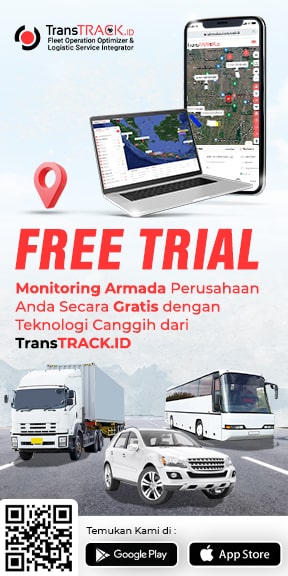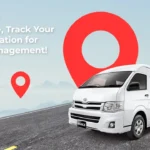Passenger Counting System, How Does it Work and Its Advantages?
Posted on October 31, 2023 by Nur Wachda Mihmidati

In this growing era, technology is becoming an important factor in public transportation management. By using the right technology, public transportation managers can improve operating efficiency, increase customer satisfaction, and strengthen their reputation in the market.
One of the technologies that can help public transportation managers achieve this goal is the Passenger Counting System (PCS). PCS can help managers to optimize fleet usage, ensure passenger safety, monitor congestion levels, improve billing accuracy, and monitor fleet performance. Check out the following article TransTRACK for more details!
What is Passenger Counting System
Passenger Counting System (PCS) is a system designed to count the number of passengers getting on and off a vehicle such as a bus, train, or airplane. The system uses sensor or camera technology to identify and record each time a person enters or exits a vehicle, and then counts the number of passengers based on that data.
By using PCS, vehicle operators can monitor the number of passengers in real-time, know the available vehicle capacity, predict arrival and departure times, and optimize overall vehicle operations. PCS can also assist in trip planning and schedule setting, as well as in providing accurate information to passengers about vehicle arrival and departure times.
How Passenger Counting Works
How a Passenger Counting System (PCS) works may vary depending on the technology used. However, in general, PCS uses sensors or cameras placed at the entrance or exit of a vehicle to identify and record each time a person enters or exits the vehicle. Here are the general steps in how a PCS works:
- The sensor or camera is activated when someone enters or exits the vehicle through the entrance or exit door.
- The system then detects people’s movements and records images or data relating to passengers entering or exiting the vehicle. This data can be an image of a face, or an identifier such as a barcode, RFID, or smart card.
- The system then processes the data obtained and calculates the number of passengers getting on or off the vehicle.
- The passenger information obtained is then stored in a database or other data storage system, and can be accessed by vehicle operators to monitor the number of passengers in real-time.
Some PCS may use more advanced technologies such as image processing and artificial intelligence to improve the accuracy of passenger counting. In the use of PCS, it is important to pay attention to environmental factors such as light, distance, and movement to ensure accurate passenger counting.
Technology in Passenger Counting System
Passenger Counting System (PCS) can work using several technologies such as sensing sensors, pressure sensors, cameras, and software. Here are some of the commonly used technologies in PCS:
- Sensing Sensors: Sensing sensors can be used to detect the presence of people in the vehicle. These sensors are usually placed at the entrance or exit of the vehicle. When a person passes through the sensor, data related to movement, weight, or pressure can be collected to identify the number of passengers entering or exiting the vehicle.
- Pressure Sensors: Pressure sensors are also used to count the number of passengers by detecting changes in air pressure inside the vehicle when someone enters or exits. These sensors are usually placed under the seats or floor of the vehicle. When a person sits or stands on the sensor, data related to pressure changes can be collected to identify the number of passengers entering or exiting.
- Cameras: PCS can use cameras to record images or videos of the vehicle entrance or exit. These cameras are usually equipped with facial recognition technology or other identifiers such as barcodes, RFID, or smart cards. When a person enters or exits the vehicle, the data associated with the identifier can be collected to identify the number of passengers entering or exiting.
- Software: The software used in PCS can process data from sensors or cameras to count the number of passengers entering or exiting. The software is usually equipped with algorithms or artificial intelligence that can improve counting accuracy.
In using PCS, it is necessary to consider several factors that can affect the accuracy of the calculation such as lighting conditions, the distance between the sensor or camera and the passenger, and the presence of objects or obstacles between the sensor or camera and the passenger. Therefore, proper setup and maintenance are required to ensure optimal PCS performance.
Advantages of Using Passenger Counting on Bus Fleets
Using the Passenger Counting System (PCS) on bus fleets has several advantages, including:
- Improve operating efficiency: PCS allows drivers or operators to know the number of passengers boarding and alighting at each stop or highway. With this information, the driver or operator can optimize routes and trip schedules to maximize fleet usage. This can save operational costs, minimize waiting time, and improve customer satisfaction levels.
- Ensuring passenger safety: By using PCS, the driver or operator can ensure that the vehicle capacity does not exceed the set maximum limit. This can help ensure passenger safety during the journey and prevent possible accidents due to overloading.
- Monitoring congestion levels: PCS can be used to monitor the level of congestion at each stop or highway. This information can help drivers or operators to take precautionary measures such as increasing the fleet size or rerouting trips to avoid congestion. Thus, drivers or operators can avoid delays and ensure timely travel schedules.
- Improve billing accuracy: By knowing the number of passengers boarding and alighting at each stop or highway, operators can calculate trip charges more accurately and avoid billing errors. This can improve financial administration efficiency and reduce operating costs.
- Monitoring fleet performance: PCS allows operators to better monitor fleet performance. By knowing the number of passengers at each stop or highway, operators can identify issues on routes or vehicles that may affect the efficiency of operations. This can help operators to perform maintenance and repairs on the fleet more effectively and efficiently.
Overall, the use of PCS in bus fleets can help improve operating efficiency, enhance passenger safety, and better monitor fleet performance. This can reduce operating costs, increase customer satisfaction, and strengthen the operator’s reputation in the market.
In this context, TransTRACK is a solution that can help public transportation managers to implement PCS more easily and effectively. TransTRACK is a Fleet Management System (FMS) that integrates various features and technologies, including PCS, in one easy-to-use platform.
By using TransTRACK, public transportation managers can easily monitor fleet usage, monitor vehicle positions in real-time, and monitor overall fleet performance. In addition, managers can monitor the number of passengers at each stop or highway, optimize travel schedules, and improve overall operating efficiency.
Thus, the use of TransTRACK’s features can help public transportation managers to improve operating efficiency, increase customer satisfaction, and strengthen their reputation in the market. Therefore, if you are a public transportation manager, take advantage of TransTRACK to improve your fleet operations and provide a better travel experience for your customers!
Topic :
 Bahasa Indonesia
Bahasa Indonesia









